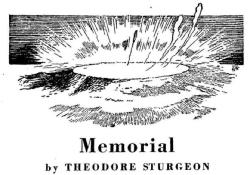I am Become Death
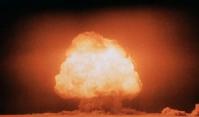 The threat of nuclear warfare was, understandably, an overriding public obsession in the mid twentieth century. However for those scientists who had been involved with the development of the first nuclear bombs, that threat was often also a source of great guilt. Perhaps unsurprisingly, a large body of science fiction has explored the ethics and emotions of these scientists [1] and the pivotal project in which they were involved.
The threat of nuclear warfare was, understandably, an overriding public obsession in the mid twentieth century. However for those scientists who had been involved with the development of the first nuclear bombs, that threat was often also a source of great guilt. Perhaps unsurprisingly, a large body of science fiction has explored the ethics and emotions of these scientists [1] and the pivotal project in which they were involved.
The Manhattan Project
The development of the first nuclear weapons was undertaken in the United States of America under the auspices of the top secret Manhattan Project, based at Los Alamos, New Mexico. This built on decades of experimentation with nuclear structure and reactions, which had already led to a clear picture of the processes of nuclear decay (e.g. Bohr, Copenhagen, 1920s-30s) and the first controlled nuclear chain reactions (Fermi, Chicago, 1942). Indeed as early as 1914, H G Wells had been able to speculate about the impact of abundant atomic energy in his novel The World Set Free, even if the processes involved had then been unclear.
The Manhattan Project was established in 1942 and recruited the cream of the physical scientists in the Allied nations to work in a scientific hothouse environment and drive weapons development. A number of centres including Oak Ridge and Los Alamos became host to key laboratories, in which personnel were gathered. Their main challenges were three-fold: to calculate the critical masses of fissionable material required for an uncontrolled nuclear fission chain reaction (i.e. an explosion); to separate out fissionable material (i.e. that sufficiently unstable to be triggered into decay) from more stable isotopes (varieties of the same chemical elements); and to devise safe and reliable delivery mechanisms for those materials (i.e. build a bomb). Initially, the motivation was use against the German forces of Hitler, who were believed to have their own atomic bomb development programme. After German surrender, the target became Japan.
Then, as now, there is a large overlap between scientists and science fiction enthusiasm, and it is perhaps unsurprising that there were connections between those involved in the endeavour and the science fiction community. Amongst those employed in the Project, for example, was Leo Szillard, a physicist who was also vocal in his interest in science fiction - citing H G Wells’ The World Set Free amongst other sources as inspiring his confidence that nuclear power would be forthcoming. In later life, Szillard himself became a published science fiction author.
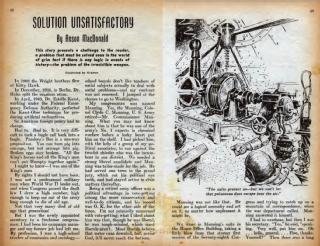 Famously, Astounding Science Fiction editor John W. Campbell was closely interested in the development of nuclear theory and regularly published editorials on the subject. Under his guidance, Robert Heinlein (writing as Anson Macdonald) predicted the need for a US Manhattan Project for the development of U235-based nuclear (albeit dust contamination) weaponry in his 1941 short story “Solution Unsatisfactory” (which appeared in the same issue as other famous stories including Heinlein's Universe and Asimov's Liar). This and other logical extrapolations of public-domain atomic science brought the pulp magazine under investigation by the Manhattan Project’s counter-intelligence security forces when Cleve Cartmill’s “Deadline” speculated on uranium processing with a little too much accuracy in March 1944.
Famously, Astounding Science Fiction editor John W. Campbell was closely interested in the development of nuclear theory and regularly published editorials on the subject. Under his guidance, Robert Heinlein (writing as Anson Macdonald) predicted the need for a US Manhattan Project for the development of U235-based nuclear (albeit dust contamination) weaponry in his 1941 short story “Solution Unsatisfactory” (which appeared in the same issue as other famous stories including Heinlein's Universe and Asimov's Liar). This and other logical extrapolations of public-domain atomic science brought the pulp magazine under investigation by the Manhattan Project’s counter-intelligence security forces when Cleve Cartmill’s “Deadline” speculated on uranium processing with a little too much accuracy in March 1944.
The Manhattan Project reached fruition with the pivotal Trinity nuclear test of July 1945 and the delivery of atomic bombs over Hiroshima and Nagasaki in August 1945. Watching the first nuclear bomb test explosions, and considering their destructive power, lead scientist Robert Oppenheimer is famously reported as quoting from the Bhagavad Gita: “Now I am become death, the destroyer of worlds”.
The sense of heavy responsibility in those words reverberated through his entire generation.
Their Own Hands
Perhaps unsurprisingly, a common theme in early science fiction which followed in the wake of the Manhattan Project was the impact on individual scientists. Many of those working in the project likely had no clear idea of the eventual use to which their work would be put. Many others may not have appreciated the scale of destruction that would result, or anticipated its use on civilian targets. Even those who had participated in a full understanding of the project’s likely result, and with faith in its wartime justification, experienced qualms at its conclusion, when considering the impact of the atomic weapons. As a result, the leading figures - and many of those less prominent - in their generation of physical scientists admitted to substantial guilt in the aftermath and regret for the lives lost as a result - in whatever part - of their own efforts.
An affecting example of these haunted scientists can be found in Theodore Sturgeon’s 1946 short story “Memorial”. A heartfelt warning against nuclear proliferation, this story focusses on a former Manhattan Project scientist, Grenfell, who is determined to devise a memorial - a bubbling Pit of never-cooling lava that will act as the ultimate warning and deterrent to anyone who might conceive of using nuclear weapons in future. The idea obsesses him and drives him to insanity. Working independently and without government support, he continues his researches and attempts to construct a device to this purpose despite its illegality.
As he protests to his friend, artist Jack Roway:
“During the war years, the skills I had were snatched up and the government flogged me into the Manhattan Project, expecting, and getting, miracles. I have never stopped working along the same lines. And now the government has changed the laws, and pulled legality from under me.”
This cry of distress brings out some of the key aspects of the post-WWII scientific guilt: the sense that science and scientists had been used and discarded; the sense that they were often compelled into the project rather than volunteers; and the conflict between the guilt participants felt and their pride in what was - in many ways - a miraculous effort in terms of scientific and technical innovation under pressure.
Of course, what the scientist in "Memorial" fails to realise is that not everyone will interpret his Pit as a warning, or understand its significance. Thus this story also questions the idea that any use of nuclear explosives can be a positive and questions humanity’s ability to learn from its mistakes.
Another early example of a fictionalised Manhattan Project can be found in James Hilton’s 1947 novel Nothing So Strange. The book is difficult to categorise. In some ways this is more of a romance or a contemporary history than a science fiction novel. It is told from the non-expert viewpoint of a young woman. Nonetheless it describes a (fictional) nuclear scientist’s training, interaction with key physicists in the UK, Germany and America, and - in the last part - his peripheral involvement in the project, and the way it affects him and his loved ones psychologically and emotionally.
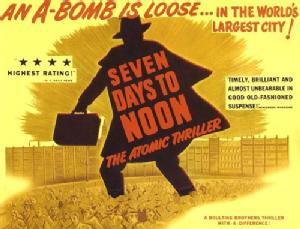 Moving forward a few years, we encounter another ex-Manhattan scientist in the 1950 SF thriller film Seven Days to Noon (dir. John & Ray Boulting). The eminent scientist in question, a Professor John Willingdon, has worked in the past in Birmingham and at Cambridge’s Cavendish Laboratory before being seconded to the effort in New Mexico and then to a military research centre at Wallingford, near London. When he goes missing a search by Scotland Yard swings into action. He proves to have stolen a small nuclear bomb and threatens to explode it unless Britain undertakes unilateral disarmament. Barry Jones, playing Willingdon, shows both strength and pathos in his portrayal of a man wracked by conscience, pacing his rented room at nights and praying in the ruins of a church damaged in the London Blitz ten years before. His manifesto is laid out most clearly in a discussion with an actress, Goldie Phillips:
Moving forward a few years, we encounter another ex-Manhattan scientist in the 1950 SF thriller film Seven Days to Noon (dir. John & Ray Boulting). The eminent scientist in question, a Professor John Willingdon, has worked in the past in Birmingham and at Cambridge’s Cavendish Laboratory before being seconded to the effort in New Mexico and then to a military research centre at Wallingford, near London. When he goes missing a search by Scotland Yard swings into action. He proves to have stolen a small nuclear bomb and threatens to explode it unless Britain undertakes unilateral disarmament. Barry Jones, playing Willingdon, shows both strength and pathos in his portrayal of a man wracked by conscience, pacing his rented room at nights and praying in the ruins of a church damaged in the London Blitz ten years before. His manifesto is laid out most clearly in a discussion with an actress, Goldie Phillips:
Willingdon: “Do you think I haven’t thought about all this? I’ve had plenty of time to think about it, you know. Month after month. Isolated. Alone. Knowing you’re developing a power greater than Man has ever dreamt of.”
Goldie: “Isolated? I’d isolate the lot of you in the ruddy zoo. Why do you want to start this science lark in the first place?”
Willingdon: “Why did I start? Why…? When I was young I saw in science a way of serving God and my fellow men. I wanted to serve. Now I see my life’s work used only for destruction. The dream has become a nightmare.”
In the film, Willingdon hopes that his actions will inspire other scientists to speak up and act against the misuse of their work. Goldie and others are more pragmatic, questioning the impact of his protest and the likelihood of it making any difference in the long run.
As well as showing the emotional aftermath of the Manhattan Project on its participants, the film is interesting as an early example of the imagined response of the country to a nuclear terrorism threat against London - a trope that would be repeated many times over subsequent decades.
Yet another such scientist, now in middle age and heading a government department in the UK, can be found in the television thriller series Doomwatch (BBC TV, 1970-1972). In this series, a small group attempt to police and combat the misuse of science in situations with either ethical or environmental impacts. These range from the breeding of intelligent rats and the development of plastic-eating bacteria, to the prejudgement of youths based on genetics or the deployment of untried chemicals. The members of this group come from a range of backgrounds - the majority of them scientific - and they are led by Doctor Spencer Quist, a Nobel laureate and former Manhattan Project participant.
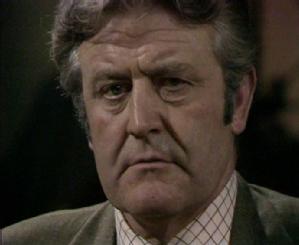 It is made clear in the dialog of the series that Quist has founded the "Department for the Observation and Measurement of Scientific Work" (aka Doomwatch) at least in part in an attempt to exculpate his guilt regarding his role in the development of nuclear weapons. This itself becomes a weapon thrown against him by his superiors and by one of his team. After one of the team is killed while attempting to diffuse a nuclear device, Quist is challenged as to whether he sacrificed the life of the young man on the altar of his own atonement for his Manhattan Project work [2]. Unusually, this question is examined in an entire hour-long episode of the series, which features both a tribunal of investigation and Quist’s discussions with a psychiatrist, as well as his team’s reaction to their loss. While the conflict is driven by grief and eventually resolved, the questions asked in this episode about Quist's culpability for his Manhattan Project work remain valid, and colour both the audience’s view of the character and his perception of himself.
It is made clear in the dialog of the series that Quist has founded the "Department for the Observation and Measurement of Scientific Work" (aka Doomwatch) at least in part in an attempt to exculpate his guilt regarding his role in the development of nuclear weapons. This itself becomes a weapon thrown against him by his superiors and by one of his team. After one of the team is killed while attempting to diffuse a nuclear device, Quist is challenged as to whether he sacrificed the life of the young man on the altar of his own atonement for his Manhattan Project work [2]. Unusually, this question is examined in an entire hour-long episode of the series, which features both a tribunal of investigation and Quist’s discussions with a psychiatrist, as well as his team’s reaction to their loss. While the conflict is driven by grief and eventually resolved, the questions asked in this episode about Quist's culpability for his Manhattan Project work remain valid, and colour both the audience’s view of the character and his perception of himself.
It’s interesting to note that in some mid-century science fiction, the collective guilt of the physical sciences - not just that of individual scientists - was seen as something that would linger for generations to come. Appointment in Tomorrow is a post-apocalyptic story I've discussed before. Written by Fritz Leiber in 1951, it examines a future in which the physics community has lost confidence in its work and its ability to communicate that work with the public. The role of physicists is exemplified by Princeton’s Institute of Advanced Studies, many of whose members were involved in the Manhattan Project, and by a disenchanted elderly scientist who may well have been modelled on Robert Oppenheimer. As a result of disengagement with the ethical side of their work by scientists, demagogy is allowed to develop and the society is taken over by charlatans. One of the intriguing aspects of this story is the way it challenges both the ethical past of academic Physics as a community involved in weapons development and the ethical failing inherent in its not becoming involved in the development and guidance of society as a whole.
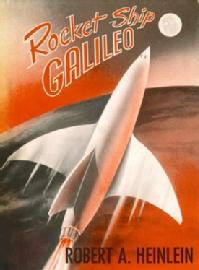 However, it’s worth noting that while the majority of appearances of atomic scientists dwell on their guilt and self-questioning regarding the ethics of their role, this is not universal. An interesting counter-example can be found in Robert Heinlein’s juvenile novel Rocket Ship Galileo (1947). Here we meet Doctor Don Cargraves - a dashing young man who is moving from his work with the Manhattan Project on to a bid to launch a nuclear-powered rocket to the Moon, rather incongruously also taking along his teenage nephew and friends. To these young Americans, amateur rocketeers of the late-1940s, the scientist is nothing short of heroic:
However, it’s worth noting that while the majority of appearances of atomic scientists dwell on their guilt and self-questioning regarding the ethics of their role, this is not universal. An interesting counter-example can be found in Robert Heinlein’s juvenile novel Rocket Ship Galileo (1947). Here we meet Doctor Don Cargraves - a dashing young man who is moving from his work with the Manhattan Project on to a bid to launch a nuclear-powered rocket to the Moon, rather incongruously also taking along his teenage nephew and friends. To these young Americans, amateur rocketeers of the late-1940s, the scientist is nothing short of heroic:
“Cargraves spent most of the afternoon spread over the bunk, telling stories of the early days at Oak Ridge when the prospect of drowning in the inescapable, adhesive mud was more dismaying than the ever-present danger of radioactive poisoning, and the story, old but ever new and eternally exciting, of the black rainy morning in the New Mexico desert when a great purple-and-golden mushroom had climbed to the stratosphere, proclaiming that man had at last unloosed the power of the suns.”
This novel predates the nuclear proliferation of the 1950s but anticipates it… albeit imagining that it would proceed under a utopian United Nations that has rendered war impossible. This optimism would have seemed shaky even at the time - this novel postdates Sturgeon’s “Memorial” by a year, for example. Heinlein himself had served in a technical role in the US Navy during the Second World War, but numbered Manhattan Project scientists amongst his friends, dedicating a novel to one of them. In his work we see the flip side of the Project for its participants - the triumph and pride in their remarkable accomplishments, and the admiration held for them by American youth at the start of the Atomic Age. Heinlein’s Cargraves suffers no real pangs of guilt for his work - instead he looks forward to developing civilian nuclear propulsion and conquering space.
Critical Paths
The role of the nuclear bomb in ending the war has been estimated in different ways by different historians and commentators. However it is no doubt that the Manhattan Project marked a critical point in the political and military development of the twentieth century. It is natural, therefore, that a large number of writers have considered the alternate histories which might have resulted had the project taken a different path. In a few rare cases, the Manhattan Project is cancelled entirely, as is the case, for example, in Allen Steele's novel V-S Day (2014), in which the funding is instead diverted to rocket development. However, more often, changes in the technical or personnel aspects of the project are considered.
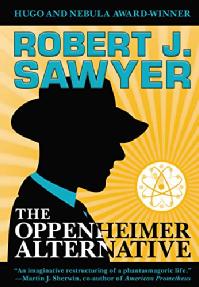 One example of this can be found in The Oppenheimer Alternative (2020) by Robert J Sawyer. This novel follows the established history of the Manhattan Project and its principle participants closely, before diverging about a third of the way through into the area of nuclear fusion and the discovery of a threat to the Earth from the Sun. As perhaps to be expected from its title, the book focuses on Manhattan Project director Robert Oppenheimer (known. rather irritatingly, throughout by his nickname Oppie) and his motivations and thought processes - both scientifically and emotionally. As part of the slow build up towards the diverging history, the novel considers the impact of the German surrender - pointing out that for many of the European emigrés in the programme, defeating Hitler and his German scientists was a personal battle that justified atomic bomb development - and the subsequent hesitancy of Project members to use the same weapon against Japan. The point of divergence here actually occurs towards the end of the war - effectively at the end of the original project. It proceeds through the Oppenheimer security hearings of the 1950s and on to Project Orion (of which, more later) but ultimately ends up with a world very different to our own. Throughout, the book closely follows Oppenheimer’s stated ethical and moral positions, and those of his colleagues, albeit coloured by knowledge of a still larger scientific problem which remains hidden from the public and shapes the end of the novel.
One example of this can be found in The Oppenheimer Alternative (2020) by Robert J Sawyer. This novel follows the established history of the Manhattan Project and its principle participants closely, before diverging about a third of the way through into the area of nuclear fusion and the discovery of a threat to the Earth from the Sun. As perhaps to be expected from its title, the book focuses on Manhattan Project director Robert Oppenheimer (known. rather irritatingly, throughout by his nickname Oppie) and his motivations and thought processes - both scientifically and emotionally. As part of the slow build up towards the diverging history, the novel considers the impact of the German surrender - pointing out that for many of the European emigrés in the programme, defeating Hitler and his German scientists was a personal battle that justified atomic bomb development - and the subsequent hesitancy of Project members to use the same weapon against Japan. The point of divergence here actually occurs towards the end of the war - effectively at the end of the original project. It proceeds through the Oppenheimer security hearings of the 1950s and on to Project Orion (of which, more later) but ultimately ends up with a world very different to our own. Throughout, the book closely follows Oppenheimer’s stated ethical and moral positions, and those of his colleagues, albeit coloured by knowledge of a still larger scientific problem which remains hidden from the public and shapes the end of the novel.
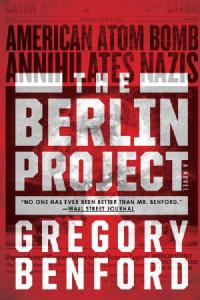 The Berlin Project by (physics professor and science fiction author) Gregory Benford is another rigorous alternate history reimagining of the project, focussing on a key but obscure scientific point. Instead of focussing on Oppenheimer, Benford selects the work of Karl Cohen (the author’s own father-in-law!) and Harold Urey as his focus [3]. He imagines a small injection of funding for their experimentation on uranium isotope separation by centrifuges early in the war. A key problem for the project was the separation of the unstable Uranium 235 isotope from the more abundant U238. As a result of this seed-corn funding, instead of the gaseous diffusion chosen by the Manhattan Project in our reality, Benford’s timeline adopted gaseous centrifuging - a more efficient method that brings the war to a nuclear conclusion sooner, with atomic weapons used against Germany in 1944 rather than Japan in 1945. Indeed, many scientists have speculated that this was a plausible outcome of their work, and that it did not occur hinged on the decision of one committee. As a result, the subsequent history of the world changes. It’s interesting to note that this variant shows no doubt that the pursuit of an atomic bomb was the correct course with a goal of shortening the war, and very little questioning of the ethics of the Project’s role, despite the occasional mention of vague regrets for the civilian victims.
The Berlin Project by (physics professor and science fiction author) Gregory Benford is another rigorous alternate history reimagining of the project, focussing on a key but obscure scientific point. Instead of focussing on Oppenheimer, Benford selects the work of Karl Cohen (the author’s own father-in-law!) and Harold Urey as his focus [3]. He imagines a small injection of funding for their experimentation on uranium isotope separation by centrifuges early in the war. A key problem for the project was the separation of the unstable Uranium 235 isotope from the more abundant U238. As a result of this seed-corn funding, instead of the gaseous diffusion chosen by the Manhattan Project in our reality, Benford’s timeline adopted gaseous centrifuging - a more efficient method that brings the war to a nuclear conclusion sooner, with atomic weapons used against Germany in 1944 rather than Japan in 1945. Indeed, many scientists have speculated that this was a plausible outcome of their work, and that it did not occur hinged on the decision of one committee. As a result, the subsequent history of the world changes. It’s interesting to note that this variant shows no doubt that the pursuit of an atomic bomb was the correct course with a goal of shortening the war, and very little questioning of the ethics of the Project’s role, despite the occasional mention of vague regrets for the civilian victims.
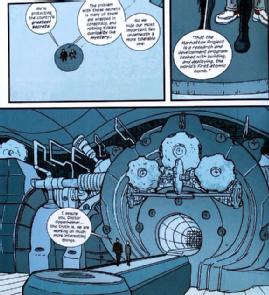 By contrast, a far less rigorous or serious approach is taken by The Manhattan Projects - a series of comics (later collected as graphic novels) written by Jonathan Hickman and illustrated by Nick Pitarra. As the plural in the title suggests, this book begins with the premise that the atomic bomb programme is merely a cover for a more complex network of projects including alien technology exploitation, parallel universe research and others. The frankly bizarre, sometimes unpleasant and rather violent story deviates from reality on just about every level, replacing Einstein and Oppenheimer with evil doubles, suggesting Enrico Fermi is some kind of demonic alien, showing Laika as a talking dog, Wehner von Braun as a cyborg, President Truman as an orgiastic cultist, and turning President Roosevelt into an AI. It continues well past the end of the war and into the Space Race era. However, running through the bizarreness and cruelty is a satirical questioning of what power scientists (and the military) should have, what power they do have, and how they permit it to be used.
By contrast, a far less rigorous or serious approach is taken by The Manhattan Projects - a series of comics (later collected as graphic novels) written by Jonathan Hickman and illustrated by Nick Pitarra. As the plural in the title suggests, this book begins with the premise that the atomic bomb programme is merely a cover for a more complex network of projects including alien technology exploitation, parallel universe research and others. The frankly bizarre, sometimes unpleasant and rather violent story deviates from reality on just about every level, replacing Einstein and Oppenheimer with evil doubles, suggesting Enrico Fermi is some kind of demonic alien, showing Laika as a talking dog, Wehner von Braun as a cyborg, President Truman as an orgiastic cultist, and turning President Roosevelt into an AI. It continues well past the end of the war and into the Space Race era. However, running through the bizarreness and cruelty is a satirical questioning of what power scientists (and the military) should have, what power they do have, and how they permit it to be used.
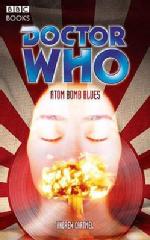 The Doctor Who tie-in novel Atom Bomb Blues (2005) by Andrew Cartmel is also an interesting example of this genre, falling somewhere between the comics and the more weighty novels already mentioned. In the story, the Seventh Doctor and companion Ace join the secret establishment at Los Alamos posing as a physicist and his calculating genius assistant. While the book is closely based on real events and the Doctor encounters Oppenheimer, with General Groves also appearing, this version of an alternative Manhattan Project is less bold than some reimaginings in focussing on the fictional characters interpolated into the establishment, primarily Japanese-American physicist Ray Morita and the base security officer Major Rex Butcher. The presence of these non-historical individuals is somewhat justified by the eventual revelation that the Los Alamos in question actually exists in a parallel universe very close to, but distinct from, our own.
The Doctor Who tie-in novel Atom Bomb Blues (2005) by Andrew Cartmel is also an interesting example of this genre, falling somewhere between the comics and the more weighty novels already mentioned. In the story, the Seventh Doctor and companion Ace join the secret establishment at Los Alamos posing as a physicist and his calculating genius assistant. While the book is closely based on real events and the Doctor encounters Oppenheimer, with General Groves also appearing, this version of an alternative Manhattan Project is less bold than some reimaginings in focussing on the fictional characters interpolated into the establishment, primarily Japanese-American physicist Ray Morita and the base security officer Major Rex Butcher. The presence of these non-historical individuals is somewhat justified by the eventual revelation that the Los Alamos in question actually exists in a parallel universe very close to, but distinct from, our own.
Again, discussion of the ethical dilemmas associated with the Project is largely ignored. On the other hand, the time-travel-based Doctor Who framework provides opportunities for Cartmel to make an interesting parallel. When the book was written in the early 2000s, some debate had arisen over the possibility that the then-under-construction Large Hadron Collider at CERN (activated in 2006) could potentially trigger a black hole formation or other event with world-ending potential. The pre-Trinity fear that an atomic bomb would create a chain reaction that destroyed the atmosphere and oceans (quickly dismissed in reality, but not so in this parallel universe) is used as a mirror to ask questions regarding the risks and responsibilities of contemporary physicists - although this is admittedly not discussed in any detail in the novel, with more focus on the role and fate of Japanese Americans. In the end, of course, the Doctor thwarts a plan that never really rises above the unlikely, but the Los Alamos setting, with its sparse New Mexico environment, provides a sense of urgency and realism to what might otherwise have been a still more strained scenario.
Aftermath
For those scientists involved in the Manhattan Project during the 1940s, their personal reactions to its aftermath varied.
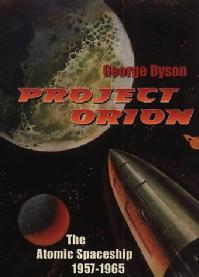
Many of the younger scientists involved in the project and its consequences focussed on turning their skills and insights in more constructive directions - often involving the developing Space Race and straddling the blurred line between science and science fiction at the time (as, indeed, Heinlein had depicted in Rocket Ship Galileo). A notable spin out of the Manhattan Project and the Los Alamos research laboratory was Project Orion - a high-powered effort to develop and build a nuclear pulse propulsion interplanetary spacecraft (i.e. one in which a vessel is propelled by a series of small nuclear explosions focussed onto a piston-like pusher plate). This project foundered on the problems of construction cost and of radioactive fallout, finally being ended by nuclear test ban treaties, but not before considerable investment of both finance and theoretical effort in the 1950s and 60s.
While the lead scientist, Freeman Dyson was too young to have been involved in the Manhattan Project himself, it was first proposed by Project scientists working at Los Alamos, and the Orion project's structure and approach were closely modelled on the earlier effort. It drew upon much of the assembled brain power and the network of nuclear physicists, chemists and engineers collected during the war, and remaining at the Institute of Advanced Studies and the National Laboratories afterwards. Perhaps unsurprisingly, nuclear pulse propulsion also appears in a number of science fiction novels - including the alternate histories mentioned above, but also in a range of 1950s and 60s space operas. Even setting aside the ultimate failure of Project Orion, Freeman Dyson is also notable for a number of other concepts which became science fiction staples, while also being well-conceptualised scientific thought experiments at the time. These include the hypothetical Dyson Sphere - a megastructure which would allow a civilisation to capture all the energy of its sun.
Inevitably, evil and amoral mirrors of the Manhattan Project also exist in fiction. In addition to some mentioned above, we could see science fictional military-scientific think-tanks such as the Kaled Scientific Elite of the Doctor Who universe (led by Davros in creating the Daleks in the 1975 story "Genesis of the Daleks") as being directly inspired by wartime scientific projects such as the group at Los Alamos. As was the case for the original Project, the Kaleds are driven by war and necessity, with a goal that many consider immoral, and dissident voices within the organisation are ignored or silenced.
However the science fictional representation of Manhattan Projects as carrying a large weight of guilt and anxiety for the future was certainly grounded in hard factual evidence. The wartime head of the Los Alamos laboratory at the heart of the Manhattan Project, Robert Oppenheimer, became director of Princeton’s Institute of Advanced Studies and later head of the US Atomic Energy Commission. Throughout, he lobbied hard against nuclear proliferation and in favour of international controls. While crucial in publicising the dangers of nuclear warfare, he suffered for his public stance, and was later hounded by security investigations, experienced the revocation of his security clearance in 1954, and was forced out of positions of authority.
His position was not particularly unusual. Albert Einstein was amongst the many scientists associated with the project to call for international nuclear control, and Nobel Prize winner Leo Szilard (who alongside Einstein had encouraged the establishment of the Project) became a strong advocate for civilian nuclear control. Szilard also wrote a science fiction anthology, The Voice of the Dolphins, in 1961 which explored his own moral culpability and the possible consequences of nuclear weapons for all life on the planet.
In addition to the concerns of prominent individuals, and the widely-reported protests sent to the White House, the wider Manhattan Project scientific community made no attempt to hide its concerns. Founded in 1945, the Bulletin of Atomic Scientists [4] was created by Manhattan Project scientists to inform both fellow scientists and members of the public, and educate them about the dangers inherent in the new atomic age.
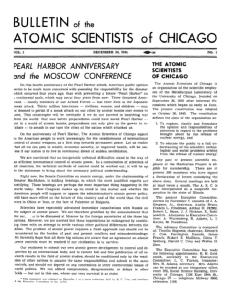 The very first Bulletin included the following statement on its front page:
The very first Bulletin included the following statement on its front page:
The constitution defines the aims of the organization as:
1. To explore, clarify and formulate the opinion and responsibilities of scientists in regard to the problems brought about by the release of nuclear energy, and
2. To educate the public to a full understanding of the scientific, technological and social problems arising from the release of nuclear energy.
Any past or present scientific employee of the Manhattan Project is eligible for membership. There are at present 200 members who have signed a Declaration of Intent embodying the above aims.
Bulletin of the Atomic Scientists, 1:1, 1 (1945)
Perhaps most famously, since 1947 it has been responsible for the Doomsday Clock - a symbolic representation of how close to annihilation the human race may be, originally with a focus on nuclear disaster and more recently also considering environmental concerns.
Interestingly, the Bulletin has also had a long-running dialogue with SF, including a study published in 1957 entitled “Why do scientists read science fiction?” which stated that:
“science fiction serves at least three personal functions for the scientist. First, it glamorizes him. At a time when the intellectual in general, and the scientist in particular, is regarded with some ambivalence, this is a most important function of the literature. Second, science fiction expresses the scientist’s protest against the use of his knowledge for anti-human ends. This is important, too, since major difficulties surround any more open show of protest. Finally, science fiction reaffirms the basic humanistic values of the scientist’s creed.” (Barron, Bulletin of Atomic Scientists, 13:2, 62, (1957))
This analysis is probably a fair summary of the position as of the mid 1950s, and is arguably still captures important elements in the science fiction interests of many scientists today (although the glamour has somewhat worn off, the inspiration and aspiration elements of science fiction remain important). The Bulletin itself has also appeared in science fiction, with the powerful imagery of the Doomsday Clock in particular becoming a motif in, for example, The Oppenheimer Alternative.
The Manhattan Project was a short-lived response to the horrors and necessities of war. It was an artefact of its time and a result of pressures that are hard to imagine at this point in time. However its impact on both science and science fiction has been long-lasting. While the participants in the project are now dead and gone, the questions they posed about the ethical role of science and scientists remain valid.
The continued interest in science-fictional alternate histories of the time, as well as in biographies of the protagonists, highlight the contemporary role of the project as a tool for discussing the relationship between science, society and the forces that threaten it. While the atomic genie is now well and truly out of the bottle, other weapons technology and potentially harmful scientific breakthroughs continue to be developed - as the 1970s series Doomwatch pointed out. These can be used for the great benefit of mankind (as was shown in Rocket Ship Galileo and so much atomic fiction of the 1950s and 60s) but only if wisely and ethically deployed. The science fiction of the Manhattan Project provides an arena in which to discuss these issues, and a warning from the past, which will remain relevant long into the future.
“I am Become Death”, Elizabeth Stanway, Cosmic Stories blog, 7th May 2023
Notes:
[1] Inevitably, for the physics and military organisations of its time, the majority of key senior players in the Manhattan Project, and in representations of it in science fiction, were male, so my apologies for the many examples in this blog article that consider scientists or physicists as uniquely “he”. Also note, I’m not going to discuss SF in which the Manhattan Project is referred to only peripherally, for example in naming the comic character Dr Manhattan. [Return to text]
[2] Unfortunately the key Doomwatch episode in this context, “Survival Code”, is one of many episodes of the series that no longer exist in the archive, and the script is not widely available - although this website includes a detailed synopsis including some dialogue which shows Quist being challenged regarding his guilt. [Return to text]
[3] Benford knew several of the key Manhattan Project scientists well, not least his wife’s father, and leans heavily on their anecdotes and remembrances, while also illustrating his text with diagrams, pictures and photographs to underline how close to reality his scenario comes. Benford also references the Astounding magazine investigation and considers the possible impact of its stories on creative physicists. [Return to text]
[4] Originally described as the Bulletin of Atomic Scientists of Chicago, and reporting on the activities of The Atomic Scientists of Chicago and a number of associated organisations with the same aims including the Federation of Atomic Scientists and the Association of Los Alamos Scientists. [Return to text]
All opinions expressed in this blog are those of the author and not necessarily those of the University of Warwick. Images are sourced online, including from the Internet Archive and Wikipedia, and used for commentary and criticism under fair use provisions.

